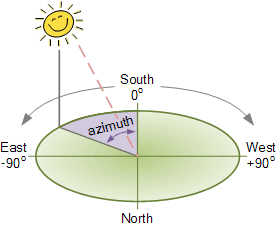
Maximizing Solar Harvesting: Strategies for Efficient Panel Placement
As solar energy continues to gain prominence as a clean and renewable power source, the efficiency of solar panels becomes paramount. Optimizing panel placement is a crucial factor in harnessing the maximum energy from the sun. Here, we explore strategies to determine the ideal placement for solar panels.
Understanding Solar Panel Efficiency and Orientation
The efficiency of solar panels is highly influenced by their orientation towards the sun. In the Northern Hemisphere, panels facing south tend to receive the most sunlight throughout the day. Conversely, in the Southern Hemisphere, a north-facing orientation is optimal. Understanding this basic principle forms the foundation for determining the ideal panel placement.
Considering Tilt Angle for Maximum Exposure
The tilt angle of solar panels plays a significant role in maximizing exposure to sunlight. The ideal tilt angle varies depending on geographic location and the time of year. By adjusting the tilt angle seasonally, solar panels can capture more sunlight during the winter months and avoid overheating during the summer, leading to overall increased energy production.
Factoring in Shade Analysis for Efficiency
Shade can significantly impact the performance of solar panels. Even partial shading on a panel can lead to a reduction in overall energy output. Conducting a thorough shade analysis of the installation site helps identify potential obstructions such as trees, buildings, or other structures that could cast shadows on the panels. Minimizing shade ensures consistent and efficient energy generation.
Utilizing Solar Tracking Systems for Optimal Sun Exposure
Solar tracking systems enhance panel efficiency by automatically adjusting the orientation of panels to face the sun throughout the day. While fixed-tilt systems have a set position, dual-axis and single-axis tracking systems follow the sun’s path, ensuring panels are always at the optimal angle for maximum sunlight exposure. Although more complex, tracking systems can significantly boost energy yields.
Employing Digital Tools for Solar Site Assessment
Advancements in technology have given rise to digital tools that streamline the process of determining optimal panel placement. Solar site assessment tools use satellite data, weather patterns, and local geographical information to provide precise calculations for the best panel orientation and tilt angle. Integrating these tools into the planning process enhances accuracy and efficiency.
Considering Local Climate and Weather Patterns
Local climate and weather patterns play a vital role in determining solar panel placement. Understanding the amount of sunlight and weather conditions specific to the region helps in optimizing panel orientation and tilt. Factors such as cloud cover, precipitation, and temperature variations should be considered to develop a comprehensive strategy for efficient solar harvesting.
Incorporating Aesthetic Considerations for Integration
In addition to functional considerations, the integration of solar panels into the aesthetic aspects of a property is essential, especially for residential installations. Strategic panel placement that complements the architectural design and landscape ensures a harmonious and visually appealing solar energy solution.
Balancing Energy Needs with Available Space
Determining the appropriate panel placement involves striking a balance between energy needs and available space. Rooftop installations, ground-mounted systems, and solar canopies each have unique considerations. Assessing the available space and aligning it with energy requirements ensures a practical and effective solar energy solution.
Consulting with Solar Professionals for Site-Specific Guidance
While general principles guide panel placement, each site is unique, and site-specific factors can significantly influence efficiency. Consulting with solar professionals, including engineers and installers, provides valuable insights tailored to the specific characteristics of the installation site. Their expertise ensures optimal panel placement for maximum energy production.
Continual Monitoring and Adjustment for Optimization
Optimal panel placement is not a one-time task; it requires continual monitoring and adjustment. Regularly monitoring energy production, considering any changes in the surrounding environment, and adjusting panel angles or configurations as needed ensures ongoing optimization and maximum efficiency over the system’s lifespan.
Conclusion: A Strategic Approach to Solar Panel Placement
In conclusion, determining the ideal placement for solar panels involves a strategic approach that considers factors such as orientation, tilt angle, shade analysis, and local climate. Employing digital tools, solar tracking systems, and seeking professional guidance further enhances the precision of panel placement. By taking a comprehensive approach and continually optimizing, solar panel systems can realize their full potential in harnessing clean and sustainable energy.
To explore more insights into optimizing solar panel placement and efficient solar harvesting, visit How to Determine Panel Placement for in-depth analyses and updates on solar energy strategies.









